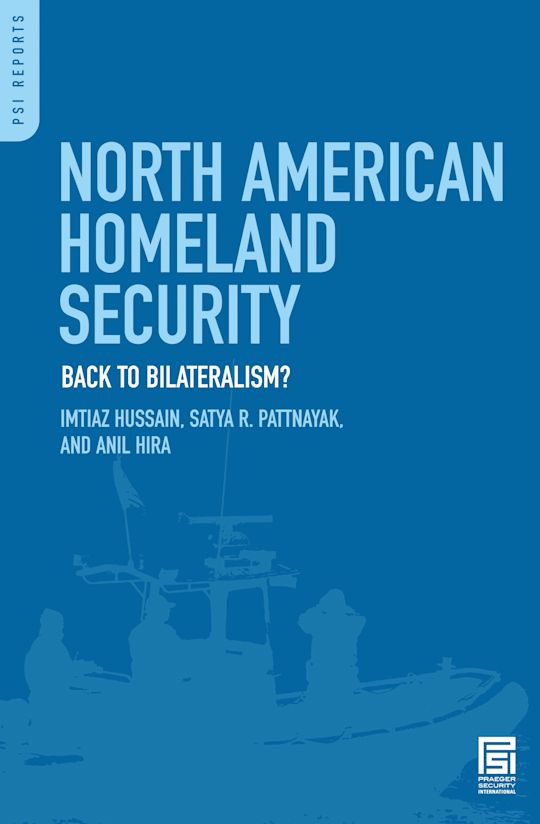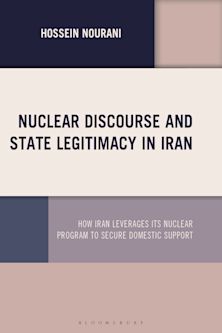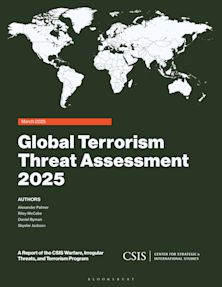- Home
- ACADEMIC
- Politics & International Relations
- Security and Strategic Studies
- North American Homeland Security
North American Homeland Security
Back to Bilateralism?
North American Homeland Security
Back to Bilateralism?
You must sign in to add this item to your wishlist. Please sign in or create an account
Description
Did 9/11 revive a North American guns-butter trade-off? Established in the largest administrative overhaul since World War II, the Department of Homeland Security was charged with keeping the United States safe within a wider security community, but confronted the Washington Consensus-based Western Hemisphere free trade movement, beginning with the North American Free Trade Agreement (NAFTA) and extending to the Central American Free Trade Agreement (CAFTA) in 2003, to materialize a Free Trade Area of the Americas (FTAA) compact. Whether 9/11 restrictions impeded these trade-related thrusts or not, embracing neoliberalism permitted Canada and Mexico to pursue their own initiatives, such as proposing free-trade to the US—Canada in 1985, Mexico in 1990, but, as during the Cold War, security imperatives ultimately prevailed.
This work investigates Canada's and Mexico's Department of Homeland Security responses through three bilateral studies of policy responses along comparative lines, case studies of security and intelligence apparatuses in each of the three countries, and a post-9/11 trilateral assessment. Ultimately, they raise a broader and more critical North American question: Will regional economic integration continue to be trumped by security considerations, as during the Cold War era, and thereby elevate second-best outcomes, or rise above the constraints to reassert the unquenchable post-Cold War thirst for unfettered markets replete with private enterprises, liberal policies, and full-fledged competitiveness?
Table of Contents
INSTITUTIONAL/PROCEDURAL MATRIX
:U.S. HOMELAND SECURITY & POST-9/11 NORTH AMERICAN INTEGRATION
:ASYMMETRY SQUEEZING OUT TRILATERALISM?
MEXICO and HOMELAND SECURITY:REVOLVING DOORS and TRANSIENT
INTERESTS?
CANADA-U.S. RELATIONS SINCE 9/11: PUTTING HUMPTY-DUMPTY BACK
TOGETHER?
POST-9/11 MEXICO-U.S. RELATIONS: GREEN PASTURES, ROUGH PATCHES,
MUDDLED OUTCOMES
CANADA, MEXICO, & HOMELAND SECURITY: ODDBALLS
9/11, THEORY, & THE NORTH AMERICAN IDEA: TRILATERALISM ON TRIAL?
CONCLUSIONS: NORTH AMERICAN TANGO: ONLY FOR TWO
BIBLIOGRAPHY
Product details
| Published | 30 Oct 2008 |
|---|---|
| Format | Ebook (PDF) |
| Edition | 1st |
| Extent | 344 |
| ISBN | 9780313356872 |
| Imprint | Praeger |
| Series | PSI Reports |
| Publisher | Bloomsbury Publishing |
About the contributors
Reviews
-
Topics include how security considerations since the attacks of September 11, 2001, have impeded further economic integration.
The Chronicle Review
-
This book is an interesting addition to the growing literature on the nature and effect of security alliances in an economically integrated world… The authors posit that security will trump economic integration for the US and that this reprioritization will increase conflict between social groups within and among states… Recommended. Graduate, faculty, and research collections.
Choice
-
How has the security regime established in the United States in the wake of the September 11th, 2001, terrorist attacks impacted trade and other relations between the United States, Canada, and Mexico? Hussain (international relations, U. Iberioamericana, Mexico), Pattnayak (sociology, Villanova U., US), and Hira (Latin American studies, Simon Fraser U., Canada) explore this question by first providing a country-specific study of 9/11 policy responses across North America, then examining the region's bilateral relations (particularly in reference to security and intelligence), and finally exploring trilateral possibilities. In exploring these issues, they rely on two major of clusters of theories: integrative (security and neofunctionalist) and hybrid (interdependence and neorealism).
SciTech Book News

ONLINE RESOURCES
Bloomsbury Collections
This book is available on Bloomsbury Collections where your library has access.



































